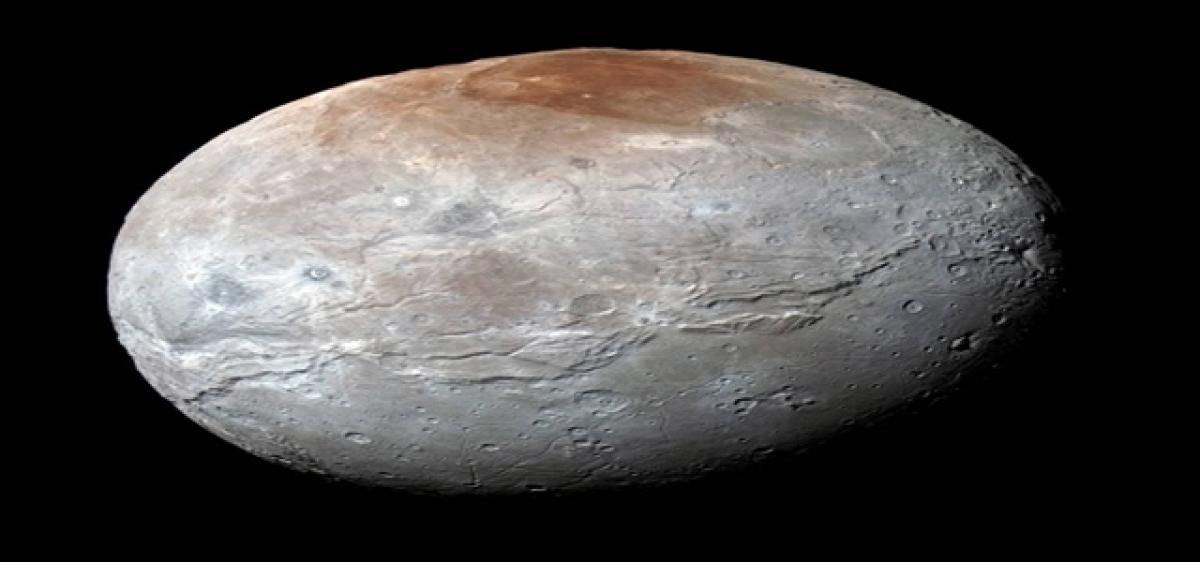Live
- Job mela at Masab Tank tomorrow
- New toilets facilitated for MPP school students
- Steps to safeguard natural springs gain momentum
- RWAs want officials to clear fog over SCB-GHMC merger
- Tanks, canals remain neglected despite execution of MGNREGS works
- BRS to celebrate Deeksha Diwas on Nov 29, Dec 9
- NCC Day grandly celebrated at SITAM
- CITU demands rollback of strategic sale of VSP
- 7-Year-old girl sexually assaulted in Tirupati
- PM Modi highlights govt's efforts to make Odisha prosperous and one of the fastest-growing states
Just In

Examining images obtained by NASA\'s New Horizons probe, scientists have found that the reddish spot at the North Pole of Charon is chemically processed methane that escaped from Plutos atmosphere onto its largest moon.
Washington: Examining images obtained by NASA's New Horizons probe, scientists have found that the reddish spot at the North Pole of Charon is chemically processed methane that escaped from Plutos atmosphere onto its largest moon.
The cameras on New Horizons spacecraft first spotted the large reddish polar region on Charon in June 2015 - something scientists had never seen elsewhere in our solar system.
Over the past year, after analysing the images and other data that New Horizons has sent back from its historic July 2015 flight through the Pluto system, the scientists think Charon's polar colouring comes from Pluto itself.
"This study solves one of the greatest mysteries we found on Charon, Pluto's giant moon," said study co-autho Alan Stern, New Horizons Principal Investigator from the Southwest Research Institute.
"And it opens up the possibility that other small planets in the Kuiper Belt with moons may create similar, or even more extensive 'atmospheric transfer' features on their moons," Stern noted.
Charon's polar coloring comes from Pluto as methane gas that escapes from Pluto's atmosphere and becomes "trapped" by the moon's gravity and freezes to the cold, icy surface at Charon's pole.
This is followed by chemical processing by ultraviolet light from the sun that transforms the methane into heavier hydrocarbons and eventually into reddish organic materials called tholins, the researchers detailed in a paper published in the journal Nature.
"Who would have thought that Pluto is a graffiti artist, spray-painting its companion with a reddish stain that covers an area the size of New Mexico?" asked Will Grundy, a New Horizons co-investigator from Lowell Observatory in Flagstaff, Arizona and lead author of the paper.
"Every time we explore, we find surprises. Nature is amazingly inventive in using the basic laws of physics and chemistry to create spectacular landscapes," Grundy noted.
For the study, the team combined analyses from detailed Charon images obtained by New Horizons with computer models of how ice evolves on Charon's poles.

© 2024 Hyderabad Media House Limited/The Hans India. All rights reserved. Powered by hocalwire.com







